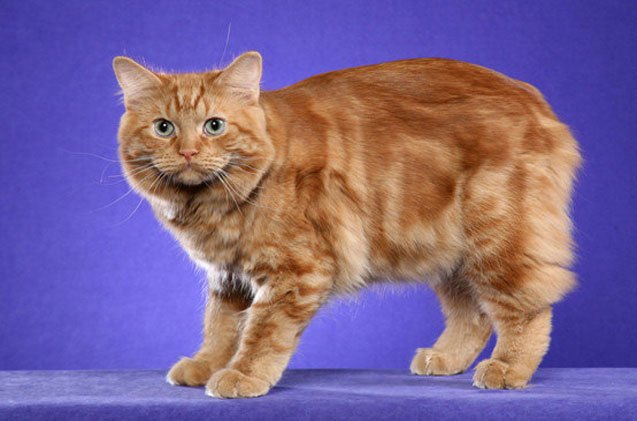It’s a struggle nearly every cat parent has experienced at least once. You’re enjoying a quiet evening, curled up on the couch, when you suddenly hear that distinctive retching sound. Your heart sinks a little knowing what’s coming, and sure enough, there it is: a slimy gift on your once-clean rug. A hairball.The unwelcome by-product of your cat’s dedicated grooming habits. While they may be common, that doesn’t make them any less gross or, more importantly, any less concerning for your cat’s well-being. While an occasional hairball might be a normal part of living with a cat, frequent or problematic hairballs should be taken seriously.In this post, I will explain exactly why hairballs happen and the potential risks associated with them that you should be familiar with. More importantly, I’ll share steps you can take to significantly reduce their frequency and help your cat lead a more comfortable, hairball-free life.Why Hairballs FormTo tackle hairballs, you must first understand how they are created. It all begins with your cat’s grooming habits, a cornerstone of feline hygiene. Cats are renowned for their cleanliness, spending a significant portion of their day meticulously grooming themselves. This process isn’t just about looking good; it’s essential for their skin and coat health.Their secret weapon to effective grooming is their tongue. A cat’s tongue isn’t smooth like ours; it’s covered in tiny, backward-facing spines called papillae. These spines act like a natural brush, running through the fur as they lick, snagging loose and dead hair, dirt, and debris.The Journey of Ingested HairAs your cat grooms, a certain amount of this loose hair is inevitably swallowed. For the most part, this ingested hair will pass harmlessly through their digestive system and be expelled in their waste. This is the ideal scenario, and it happens without a hitch for many cats.However, sometimes the hair doesn’t make it all the way through. When a significant amount of hair accumulates in the stomach, it can clump together, forming a dense, compact mass that your cat’s digestive system can no longer process or pass. This is what we know as a hairball, or scientifically, a trichobezoar. At this point, your cat’s body recognizes that it is something that needs to be expelled, triggering the familiar retching, and you know the rest…Why Some Cats Form More Hairballs Than OthersWhile every cat grooms and ingests some hair, certain factors can significantly increase the likelihood that your cat will be unable to pass this hair, leading to hairball formation. This includes:Coat length and type: This is perhaps the most obvious factor. Long-haired breeds, like Maine Coons, Persians, or Ragdolls, naturally shed and ingest far more hair during grooming than their short-haired counterparts. More hair going in means a higher chance of a hairball forming.Shedding season: Just like us, cats experience seasonal shedding. During these high shedding periods, typically in spring and fall, the sheer volume of loose hair they ingest skyrockets, making hairballs more prevalent.Grooming habits: Sometimes, a cat may groom excessively, causing them to ingest more hair than usual. This over-grooming isn’t always about cleanliness. It can be a symptom of underlying issues like stress, anxiety, allergies, skin irritations, or even pain in a particular area. Addressing the root cause of the over-grooming is essential if you want to reduce hairballs.Underlying health issues: Less commonly, a cat’s digestive system might not function as it should. Conditions such as inflammatory bowel disease (IBD), other digestive tract issues, parasites, or even dental problems that make eating uncomfortable can hinder the normal passage of the ingested hair through the intestines. This, of course, makes it more likely to accumulate in the stomach and form a hairball.When Hairballs Become a Concern Hairballs may not be a pleasant experience, but an occasional hairball is nothing to be too concerned about. However, as cat parents, we must learn how to recognize the fine line between a regular occurrence and a potential health concern. Normal vs. Problematic HairballsFor most cats, especially those with longer coats or during shedding seasons, producing a small hairball every now and then can be expected. Think of it as their natural way of clearing out the ingested hair that didn’t make it through the digestive tract. However, if your cat starts producing hairballs frequently (for instance, several times a month or multiple times a week), you should consider it a red flag. Similarly, if the hairballs are unusually large or they are accompanied by other noticeable changes in your cat’s health or behavior, it’s time to pay closer attention. These are signs that something more might be going on, suggesting that your cat’s system isn’t processing the hair effectively. Signs of Serious Hairball Issues If you notice any of the following symptoms combined with, or in place of, frequent hairballs, it’s a strong indication that there may be bigger concerns requiring prompt vet attention: Frequent vomiting (beyond just hairballs): If your cat consistently throws up food or bile, even without producing a hairball, it suggests a broader digestive upset or other underlying medical issues. Straining to defecate or constipation: Hairballs can sometimes become lodged in the intestines, making it difficult for your cat to pass stool. You might notice them repeatedly trying to use the litter box unsuccessfully. Loss of appetite or weight loss: A significant decrease in food intake or noticeable weight loss is a serious red flag, often signaling a gastrointestinal blockage or other significant health issue causing discomfort. Lethargy or hiding: A sudden change in your cat’s energy levels, becoming unusually sluggish, withdrawn, or hiding more than usual, can be a sign of pain or illness. Persistent coughing or gagging (without producing a hairball): This symptom is particularly concerning, as it could be a sign of a partial obstruction in the throat or esophagus, or even a respiratory issue mimicking hairball attempts. Bloated or painful abdomen: A swollen, distended, or tender belly is a critical sign of a severe blockage or other abdominal problem. Diarrhea: While less commonly associated directly with hairballs, persistent diarrhea can also signal overall gut upset that might be contributing to or exacerbated by hairball issues. The Danger of Intestinal Blockages The most significant risk associated with hairballs is the potential for an intestinal blockage, also known as an obstruction. This occurs when a hairball becomes too large or dense to pass safely through the narrow space of your cat’s intestines, getting stuck and completely blocking the digestive tract. This isn’t just uncomfortable; it’s a genuine medical emergency that can quickly become life-threatening. An intestinal blockage prevents food and waste from moving through, leading to severe pain, dehydration, tissue damage, and potentially rupture of the intestine. If left untreated, it can be fatal. This medical emergency almost always requires immediate vet intervention, which often includes surgery to remove the obstruction. This is why it is so critical that cat parents learn to recognize the signs of trouble and seek veterinary care without delay if they suspect something may be wrong.




























